What Do the 3 Pedals on a Piano Do?
One of the first questions people ask when they’re new to the piano is, “What do the pedals do?” It’s a great question!
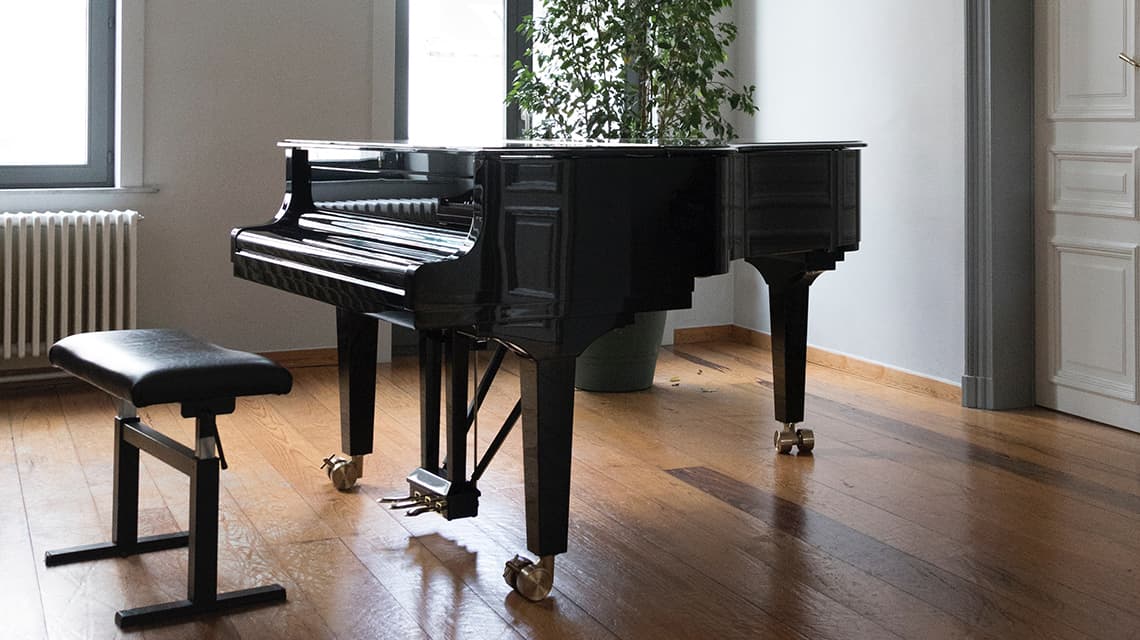
One of the first questions people ask when they’re new to the piano is, “What do the pedals do?” It’s a great question!
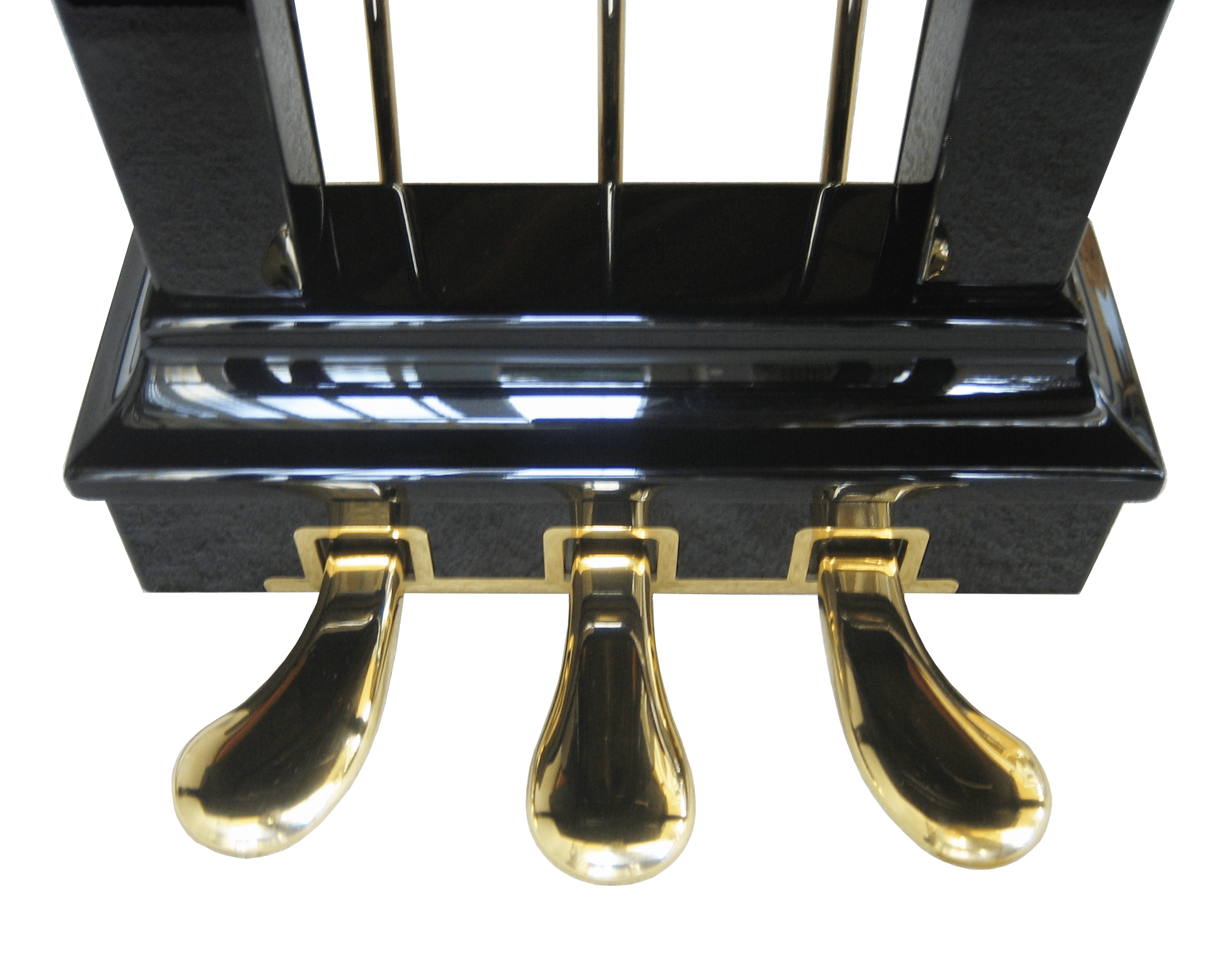
If you’re experimenting with the pedals, it’s pretty obvious that the pedal on the right changes the sound of the piano, but it might not seem like the other two pedals do much. Let’s dig in and find out all about the pedals, starting with the pedal on the right, the sustain pedal, also called the damper pedal.
Sustain Pedal
The sustain pedal is the most frequently used pedal on the piano. Once you learn how to use it, you’ll incorporate it into most of your piano playing.
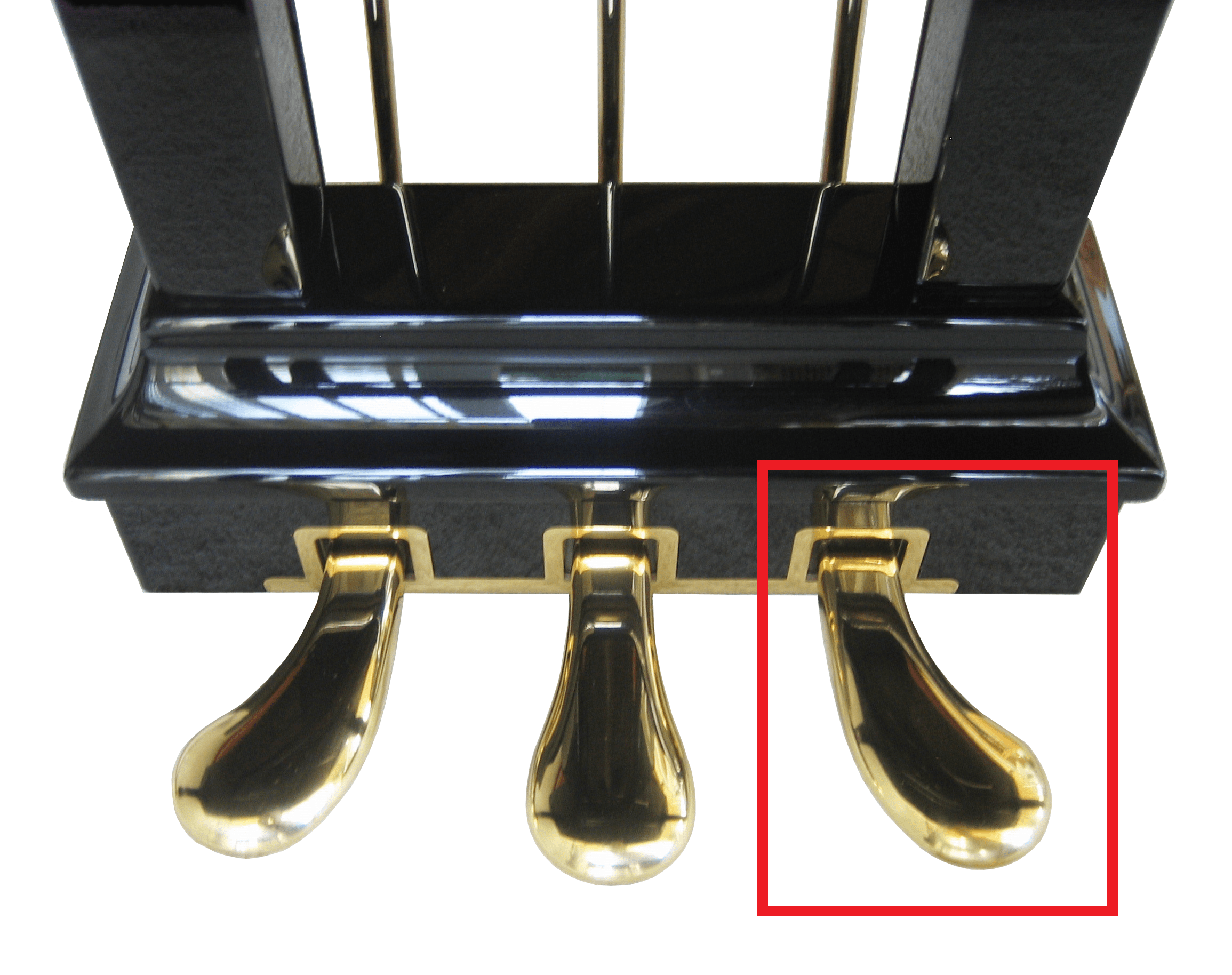
Sustain Pedal
A lot of people initially believe that holding the sustain pedal down makes the piano sound louder. This is sort of the case, but there is a little more to it!
Normally, when you play a piano key without holding the sustain pedal down, the sound stops as soon as you release the key. With the sustain pedal down, the strings can continue to vibrate until the pedal is released or until the sound naturally dies away. This creates the illusion of loudness when really, the continuous vibration of the strings is creating a fuller or bigger sound.
One of the most significant advantages to using the sustain pedal is that it allows the pianist to create a very fluid and connected sound. This means you can move your hands all around the keyboard without the music sounding disconnected or choppy. Another exciting feature of using the sustain pedal is that it allows many harmonious overtones to sound. For example, when you play a low C with the sustain pedal depressed, all of the pitches pictured below will also be vibrating.
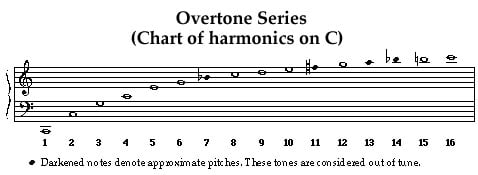
Image Credit: OnMusic Dictionary
While the sound of these pitches is very subtle, you would definitely notice if they were lacking. This is what gives the piano it’s rich and unique sound.
Learning to play with the sustain pedal requires specific techniques that you will learn over time. At first, it will feel clumsy to use the pedal. It can be hard to split your attention between what your hands are doing and coordinating your foot to move simultaneously. But, just like coordinating your left and right hands at the piano, over time, it will become second-nature.
Not all music indicates when to use the sustain pedal, but there are two ways that it may be notated in your sheet music. The first way is with the “ped” and asterisk symbols. The “ped” marking indicates that you should press the pedal down, while the asterisk indicates that you should release the pedal.
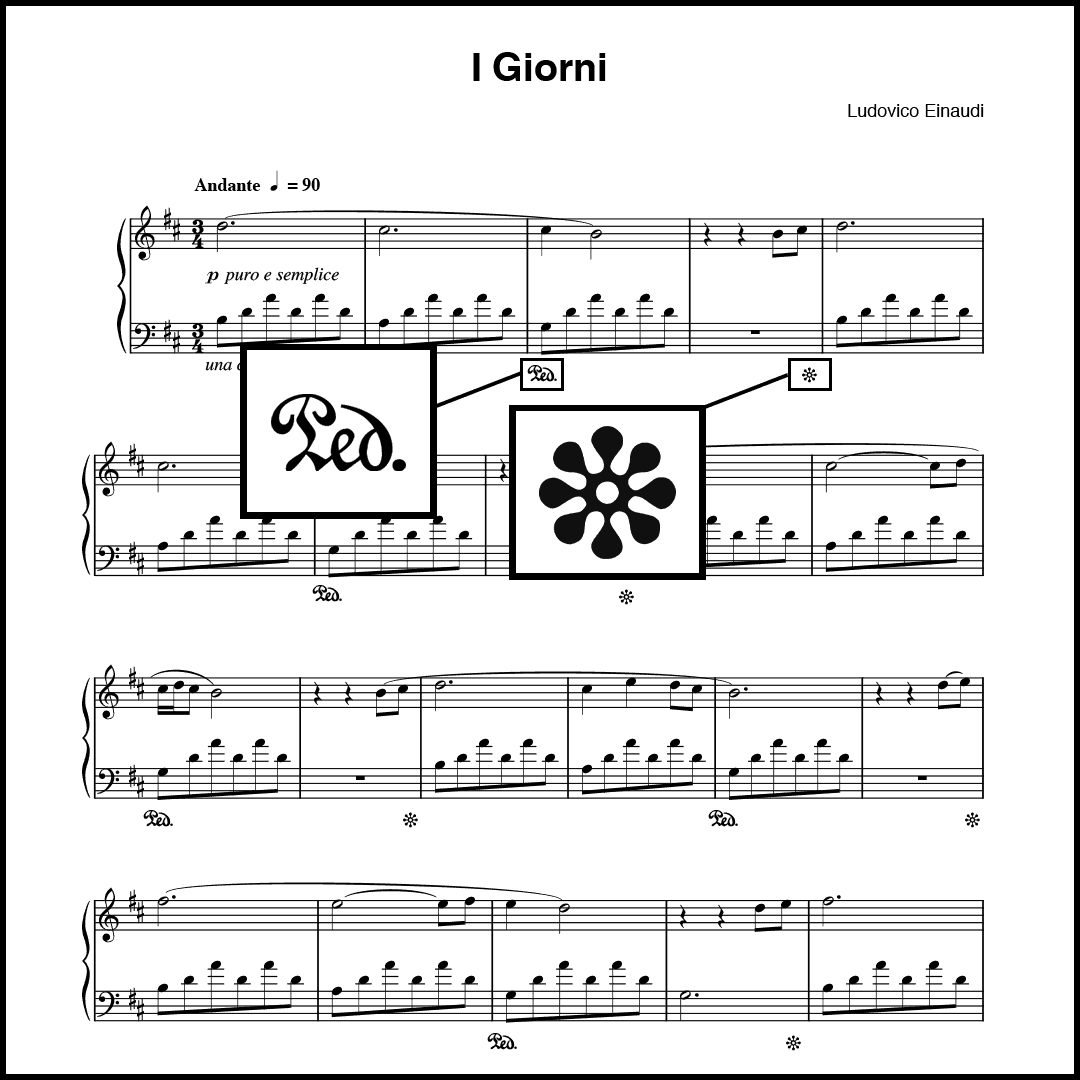
Pedal Markings in “I Giorni” by Ludovico Einaudi
Alternately, a line below the staff also indicates when to depress and release the pedal. You press the pedal down when the line starts and release the pedal when the line ends. You may also see you see a notch in the line, which indicates that you should quickly release the pedal but immediately depress it again. This is called overlapping pedaling, and it is how you create a continuous sound from the piano.

In some advanced piano sheet music, you may simply see the words “con pedale” at the beginning of the piece, meaning “play with the pedal.” Once you become comfortable with using the sustain pedal, this instruction won’t be nearly as intimidating!
Soft Pedal
The soft pedal is the pedal on the left side, and it’s also called the una corda pedal. This pedal changes the tone of the piano to a slightly softer sound.
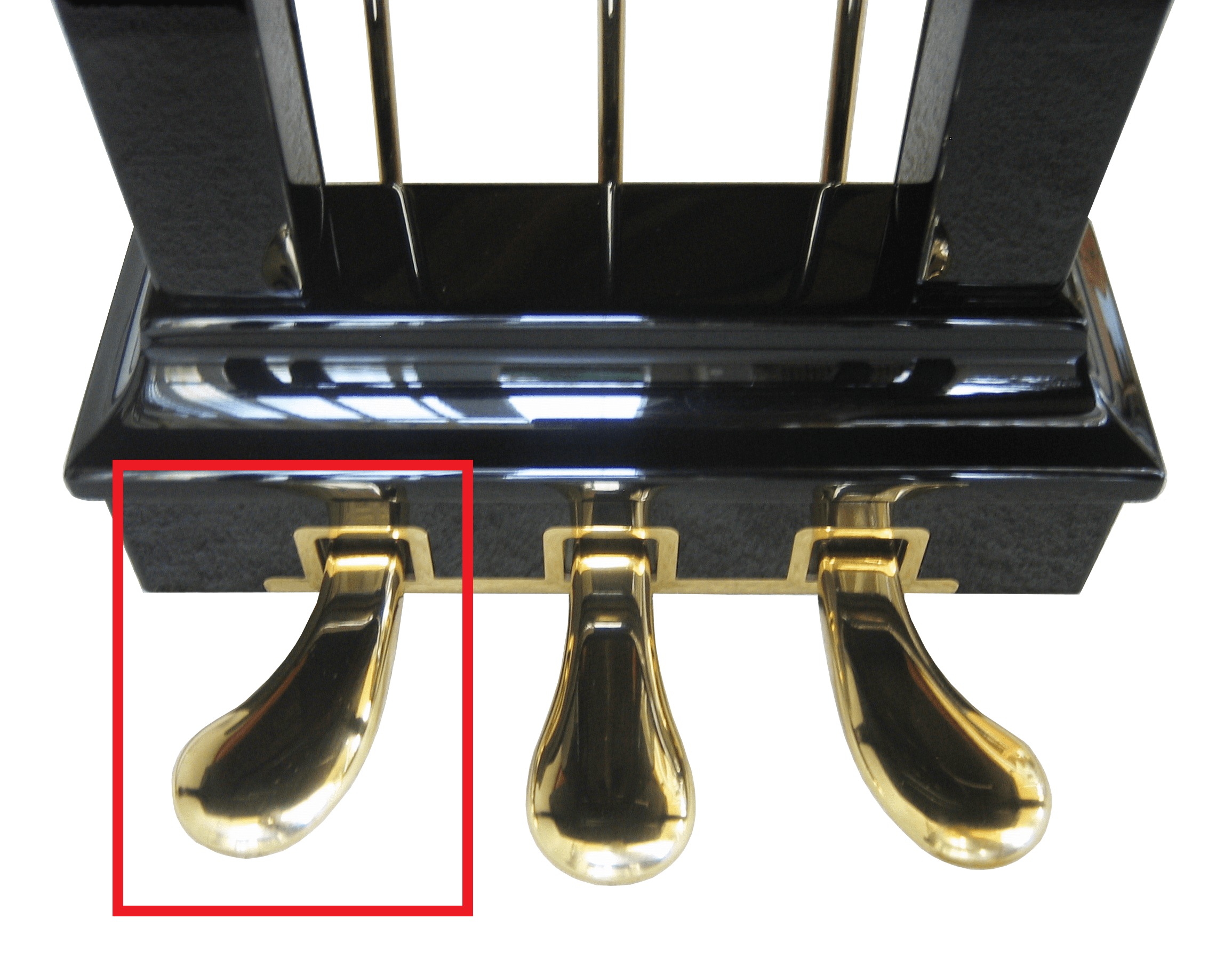
Normally, when you play a piano key, the hammer strikes three strings for each given pitch. Depressing the soft pedal causes the keys and hammers to shift slightly, allowing the hammer to reach only one or two strings.
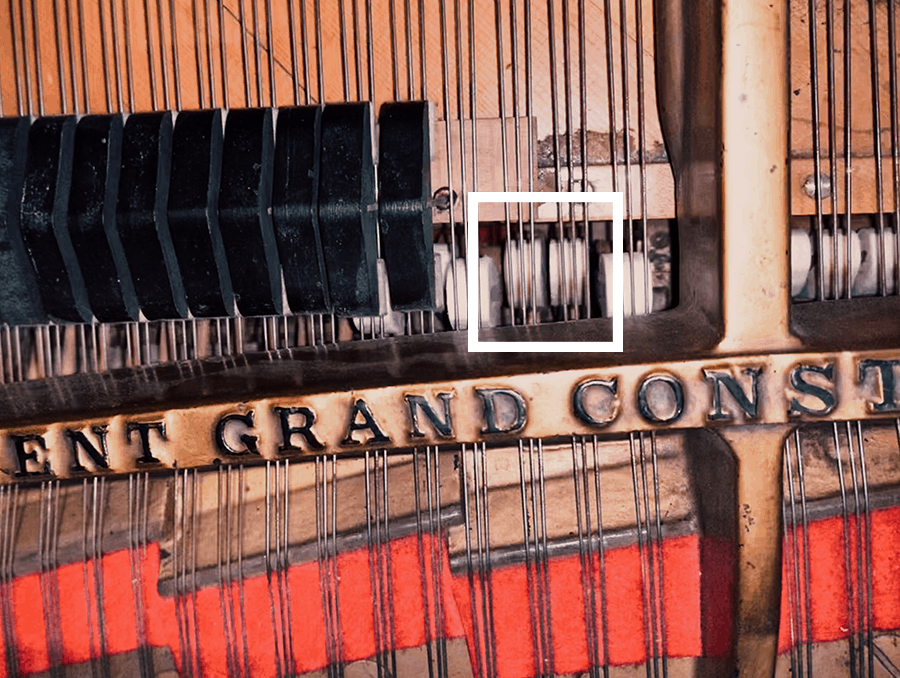
Two hammers hitting strings
The reason the soft pedal is sometimes called “una corda” is that una corda means “one string.” Formerly, piano strings had a little more space in between them, which allowed the hammer to truly only touch one string when the soft pedal was depressed. Modern-day piano strings are a little closer together, so often times the hammer makes contact with two strings instead of just one.
If a composer intended for music to be played with the soft pedal, you will see una corda written into the music when it is time to depress the pedal. Tre corda, literally meaning “three strings,” means to release the soft pedal, or resume allowing all three strings to sound.
The soft pedal can also be used at your discretion at times when you are trying to create a very noticeable distinction between soft dynamics. You may also choose to use it if you are playing your music in a quiet setting.
One note about the soft pedal is that it’s really only noticeable if you are already playing softly. You wouldn’t play with a loud dynamic and use the soft pedal to change that dynamic. Instead, use the pedal when you are already playing softly to soften the sound even more.
Sostenuto Pedal
The middle pedal on a piano may vary from piano to piano. Generally, there are three options about what to expect from a middle pedal.
- The sostenuto pedal. This is the most authentic use for a middle pedal and will be explained further below.
- A practice pedal. Occasionally the sostenuto pedal is replaced with a practice pedal. This pedal locks into place, so it does not have to be held down. When it is depressed, a piece of felt drops between the hammers and keys created a muted sound. As the name implies, this is primarily used for practice purposes when a pianist might prefer to keep the volume down. You wouldn’t see notation for when to use this pedal because it is not used in performance and is not a consistent feature of a piano.
- Absence of a third pedal. Some pianos only have two pedals, and in this case, it is always the sostenuto pedal that is missing.
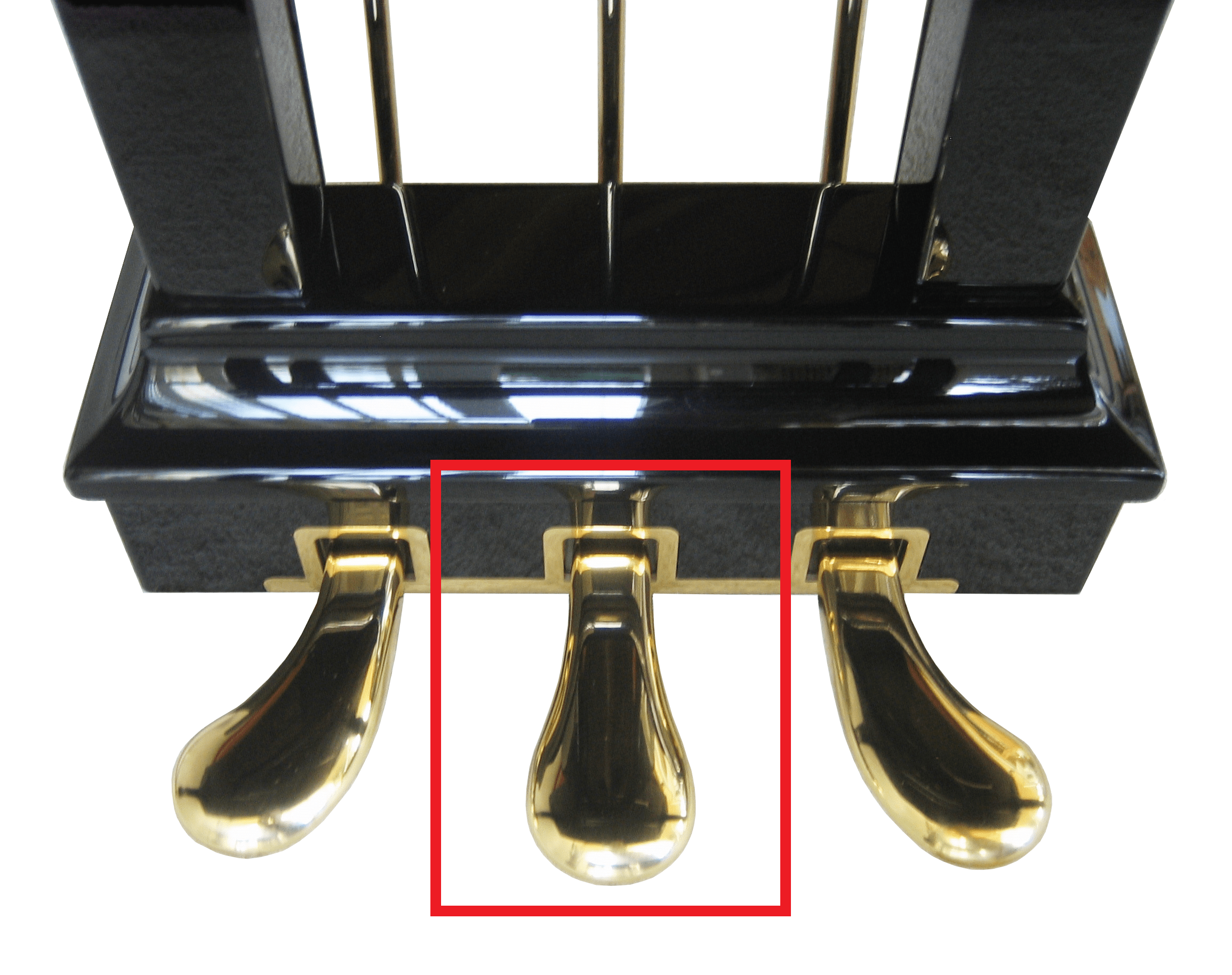
When the middle pedal is a true sostenuto pedal, it functions similarly to the sustain pedal with a couple of important differences. First, it only sustains notes from Middle C and lower. And second, it only sustains notes that you are already playing when the pedal is depressed. No other keys on the piano would sustain while the sostenuto pedal is down unless you are also using the sustain pedal.
An example of this is in measure 15 of “Claire de Lune” by Claude Debussy. There are two low E’s that last the whole measure played by the left hand, then half a beat later, both hands immediately play chords in the treble clef.
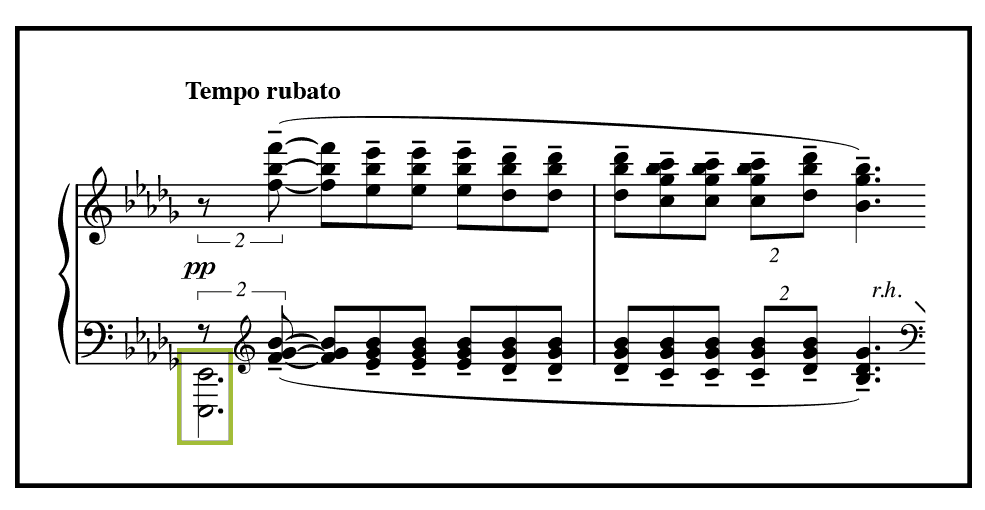
This is a case where playing the sostenuto pedal on the left hand E’s would help them sustain throughout the measure so that the left hand could quickly move on to the following chords. Meanwhile, the pianist would use the sustain pedal to help the chords to sustain and connect without disrupting the continuous sound of the bass E’s.
Using the sostenuto pedal can be a little complicated, but honestly, it’s pretty rare to have to use it. It’s a relatively recent addition to the piano, as it started to become a common feature in the second half of the 1800s. A lot of piano repertoire had already been written before it was available. However, if it is notated in the music to use the sostenuto pedal, you’ll see an abbreviation such as “sos.” or “S.P.” You may even find occasions to use it when it is not marked. Any time your left hand needs to be sustaining a chord and simultaneously playing another voice would be an excellent time to try it out!
Final Pedal Tips!
When it comes to actually using these pedals, make sure you are sitting far enough back from the piano. You’ll want your legs to extend out to reach the pedal. If your legs form a 90-degree angle at your knee, you are too close, and you’ll have trouble moving the pedals.
While the sustain pedal can create beautiful, harmonious sounds on the piano, it’s common for pianists to overuse it. Never allow your foot to rest continuously on the sustain pedal unless called for in the music. Pianists often get in the bad habit of using the sustain pedal as a crutch to cover mistakes or play with sloppy technique. Be careful not to fall into this trap. It can make your music sound too heavy and messy.
We hope you now understand why the pedals on a piano are there and are excited to try a few of them out! Make sure to grab the sheet music for your favorite piano pieces at Musicnotes.com, whether you’re advanced, intermediate, or just starting out!

